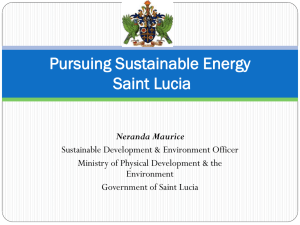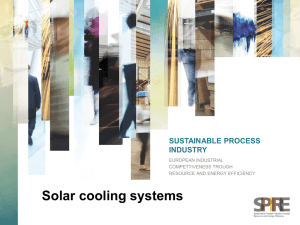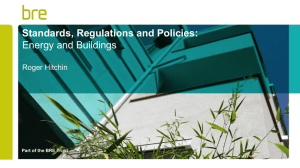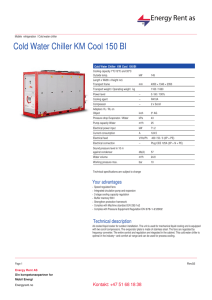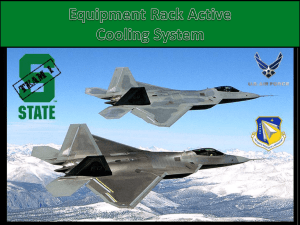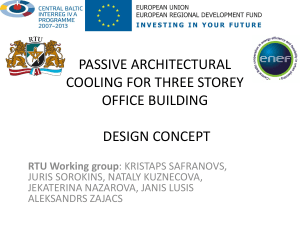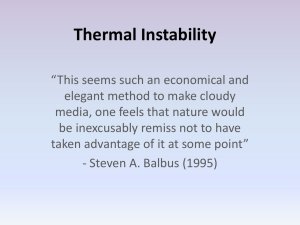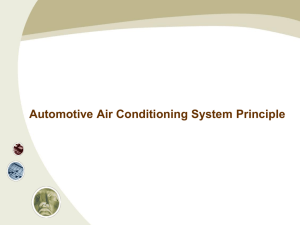Reversed cycle machines Dr. Tamás Szakács
advertisement
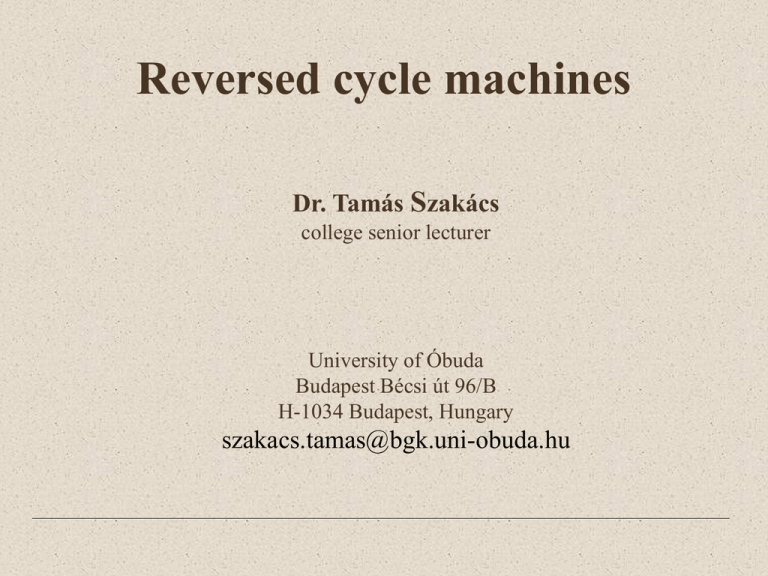
Reversed cycle machines Dr. Tamás Szakács college senior lecturer University of Óbuda Budapest Bécsi út 96/B H-1034 Budapest, Hungary szakacs.tamas@bgk.uni-obuda.hu Content of the presentation • • • • • Introduction Reverse cycle machines Design of the inner cycle Design of the heating/cooling properties Examples Introduction Reversed cycle machines • Machine is producing work from introduced heat. E.g. the idealized Carnot cycle, or the realized Otto, Diesel or Joule cycles. • Reversed cycle transforms heat opposite the natural direction, but requires work. For example: Refrigerator, heat-pump. Introduction Importance of reversed machines • Increasing energy consumption of EU countries. • Peak-loads in summer (originated from air conditioning). • Reversed machines can help reducing energy consumprion even in increasing demands. Reversed cycle machines • Coolong (refrigerating) • Air-conditioning • Heating • Drying Heating by reverse cycle air conditioning Reverse cycle air conditioning extracts heat from a natural heat source (e.g. soil, or the outside air, even on mid-winter nights) and transfers it inside. A refrigerant is passed through an external coil, absorbing the heat. This refrigerant is then compressed by a compressor into a fan coil unit (or ‘condenser’) inside the home, releasing its heat into the room. Heating by reverse cycle air conditioning Advantages: • One of the most economical forms of heating • Able to provide both heating and cooling • Have no exposed elements or flames • Lifetime of up to 20 years • Filter and dehumidify air • Can utilize district- and waste heat, heat from COG, and renewable heat sources. Reverse cycle air conditioning Types: • • • • • Portable Window/wall units Split systems Multi-split systems Ducted systems Mollier diagram with approximation range and rated refrigeration cycle Solar assisted air conditioning Principle of an absorption chiller Key Issues for Renewable Heat in Europe (K4RES-H) Solar Assisted Cooling – WP3, Task 3.5 Contract EIE/04/204/S07.38607 Keep Cool Solar Cooling www.energyagency.at Principle of an absorption chiller Keep Cool Solar Cooling www.energyagency.at Principle of an absorption chiller Principle of an adsorption chiller Key Issues for Renewable Heat in Europe (K4RES-H) Solar Assisted Cooling – WP3, Task 3.5 Contract EIE/04/204/S07.38607 Principle of an adsorption chiller Solid desiccant cooling with rotating wheels Solid desiccant cooling with rotating wheels Key Issues for Renewable Heat in Europe (K4RES-H) Solar Assisted Cooling – WP3, Task 3.5 Contract EIE/04/204/S07.38607 Overview of the most common solar assisted air conditioning technologies Overview of the most common solar assisted air conditioning technologies Mollier h-x-Diagramm für feuchte Luft für p=1 bar Idealized Carnot cycles Ambient temperature S Cooler Single purpose S heat-pump Multipurpose S heat-pump Electric S powerplant Calculation example Example 1 How much is the cooling capacity of a cooler made of an adiabatic compression and expansion pistion cycle with ammonia refrigerant? The temperature of the condensation is 30C, the evaporation -10C degrees. The compressor is supplied with dry saturated gas. (x2=1). The condensation is performed till x3= 0. 3 2 1 4 240 275 1355 1542 h3 275kJ kg h1 1355kJ kg h4 240kJ kg h2 1542kJ kg Transferred heat in the evaporator by 1 kg cooling agent: kJ q0 h1 h4 1355 240 1115 kg Mass flow of the circulated cooling agent: Q0 3600 100 3600 kg K 322,9 q0 1115 h Work required to power the compressor: kJ wk h2 h1 1542 1355 187 kg Work done by the expansion piston kJ we h3 h4 275 240 35 kg Work required to keep the cycle up: w wk we 187 35 152 W COP: kJ kg K w 322,9 152 13,6 kWh 3600 3600 q0 1115 7,3 w 152 Supplied volume flow of the compressor: Vk K v1 322,9 0,4 129,2 m3 h Calculation example Example 2 The temperature of a m=18000kg air t1=80°C, moisture content x1=0,03kg/kg. Make a x4 = 0,01 kg/kg dry air by cooling, while keep the outlet temperature same as t1. How much water has to be drained? How much heat has to be subtracted for the cooling and added for the re-heating? Properties of point 1 t1 = 80 oC h1 = 160 kJ/kg x1 = 0,03 kg/kg. Properties of point 2 t2 = 14 oC h2 = 141 kJ/kg x2 = x1 Properties of point 3 t3 = t2 = 14 oC h3 = 39 kJ/kg x3 = 0,01 =1 Properties of point 4 t4 = t1 = 80 oC h4 = 108 kJ/kg x4 = x3 = 0,01 kg/kg. Water removed GH 2O m x2 x3 18000 0,03 0,01 360kg Heat removed by cooling Qh m h1 h2 18000 160 41 2,142106 kJ Heat added by re-warming Qm m G h H 2O 4 h3 18000 360 108 39 Qm 1,217106 kJ Thank you for the attention szakacs.tamas@bmf.uni-obuda.hu

